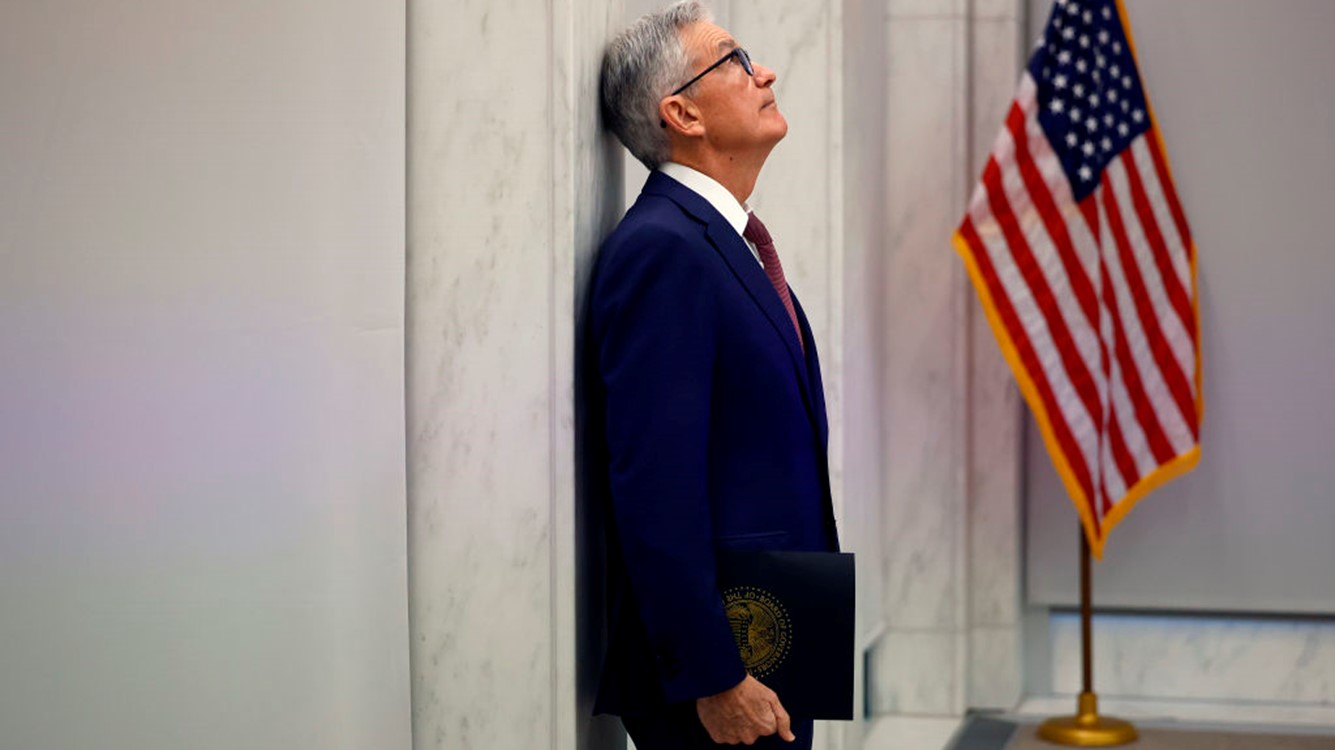Stunningly strong 2023
Consumers stepped up, while businesses investment faded.

January 25, 2024
Real GDP growth rose at a 3.3% annualized rate in the fourth quarter, stunningly strong following the 4.9% surge in the third quarter. The U.S. recovery was much stronger than its peers in the developed world, accelerating in the wake of the most aggressive credit tightening cycle since the 1980s. Real GDP growth rose 2.5% in 2023, 0.6% above the 1.9% pace of 2022. Growth on a fourth quarter-to-fourth-quarter basis, which better measures momentum, rose 3.1%, well over four times the 0.8% pace of 2022.
The acceleration in growth was due to a sharp acceleration in productivity growth, given the slowdown in employment gains. A drop in churn in the labor market and the pushback to price hikes enabled workers to learn the jobs they were in and firms to leverage the technology they scrambled to deploy as the world initially shut down. Training suffered during early phases of the recovery. Now we are finally able to focus on recouping what was lost in both training and education, which is reaping dividends.
The surge in productivity, prompted in part by the Federal Reserve’s efforts to rein in inflation, helped cool inflation. There were glimmers of the later phases of the 1990s boom, when productivity soared and inflation continued to cool despite robust growth.
The GDP deflator slowed to a 1.5% rate, its lowest level since it went negative at the onset of the pandemic. The personal consumption expenditure (PCE) index, the Federal Reserve’s favored measure of inflation, slowed to a 1.8% annualized pace from 2.5% in the third quarter. The core PCE (excluding food and energy) stayed at a 2% annualized rate, or the Fed’s target, for the second consecutive quarter. The data suggest that core PCE slowed from a 3.2% pace on a year over year basis in November to a 2.9% pace in December. The deceleration in inflation was one of the most rapid on record; only WW-II, the Korean War and the double dip recessions of the early 1980s precipitated a more rapid deceleration.
The Fed faces two challenges. It welcomes the deceleration in inflation but is still worried that inflation could reaccelerate with stronger growth. Stronger productivity growth also justifies higher rates than the world we left. Cutting too aggressively with growth so robust could risk reigniting inflation. We have held to our forecast for a May rate cut and a total of four cuts for the year. The surge in productivity growth is extraordinary. We haven’t seen anything like this since the late 1990s, when income inequalities narrowed. That is a goal to strive for.
Fourth quarter detail
Consumers were remarkably resilient, and even defiant, in the face of rate hikes, with broad-based gains of 2.8% in the fourth quarter. That is only slightly slower than the 3.1% gain in the third quarter. Consumers locked into low rates, paid down debts, banked savings and are now earning interest on savings. That helped to heal household balance sheets rapidly and provided a cushion for consumers even as employment gains slowed. Inflation is now cooling faster than wages, which is an added boost to keep consumers afloat in the first quarter.
Even consumer attitudes started to show a glimmer of hope by year-end, but we remain much more skeptical about the world than we were in the past. It is hard not to be, given the speed at which the news cycle shifts and the sad fact that we now are much more likely to view the economy through the prism of our political affiliations. The resilience of the labor market and the determination of consumers to step up and step out was one of the biggest upside surprises to 2023. What we are watching is the pickup in credit card usage; the interest on that debt is compounding much faster than it did in the past.
Residential investment edged up slightly, as new home construction and sales were more buoyant than existing sales. Existing sales suffered the most from the surge in mortgage rates, which hit a peak in October. The slight gain in the fourth quarter marked the second consecutive move up in residential investment in more than two years, but just barely. Existing home sales hit their lowest level since 1995 in 2023; it was a very hard year for realtors. The housing market was the single largest drag on the overall economy for the year.
Home builder confidence improved in December and January but remains in contractionary territory. We completed more than a million single-family homes in both 2022 and 2023, the strongest years for completions since 2007. Millennials are aging into their peak buying years, which is buoying demand for homes, regardless of the hurdles to affordability. Millennials have been leaning more on their parents to garner a down payment. Their parents were hedged against rate hikes, as they either locked into a low rate earlier in the recovery or have paid off their homes entirely; more than 40% of the existing stock of homes has been paid off.
Business investment slowed over the course of the year and into the fourth quarter. Gains came in even weaker than expected at year-end. Investment in structures moderated, while the rebound in spending on new equipment disappointed. Higher interest rates and falling oil prices sidelined investments in both renewable infrastructure and the oil industry. Lending standards for commercial real estate and multifamily home builders also tightened. Investment in intellectual property picked up in response to the end of the actors’ and writers’ strikes and new investments in generative AI.
The largest upside surprise was inventories, which grew instead of contracting. This is despite reports that retailers were ordering more conservatively for the holiday season. The draining of those inventories could place a drag on growth in the first quarter, although the purchasing managers’ indices showed some signs that manufacturing activity started to grow again in January.
Supply chains continued to heal until very late in the quarter, when attacks on vessels in the Red Sea started to accelerate. That is diverting ships around Africa instead of traversing the shorter route through the Suez Canal. The Panama Canal is suffering from low waters due to droughts. Those shifts could snarl supply chains and add to costs as we move into the start of 2024 but not to the extremes of 2021. Demand is not as robust, while we now have excess as opposed to constrained manufacturing capacity at home and abroad.
Government spending also surprised to the upside. Gains in state and local spending, which were buoyed by a hiring spree by state and local governments, dominated gains. Federal spending weakened but not as much as expected in response to the Continuing Resolution in Congress, which took effect on October 1 and has since been extended twice. The new C.R. will keep the government open through early March. The weakest part of federal spending was spending on defense; additional outlays for Ukraine, Israel and Taiwan were not included in the continuing resolution.
The trade deficit narrowed. Both exports and imports slowed during the quarter, but imports slowed more rapidly than exports. Those gains are expected to be short-lived, given the disparity in growth in the U.S. and its trading partners. Growth in Europe and Canada is much weaker than in the U.S.
The determination of consumers to step up and step out was one of the biggest upside surprises to 2023.
Diane Swonk, KPMG Chief Economist
Bottom Line:
The economy performed remarkably well in 2023, accelerating on the heels of aggressive rate hikes by the Federal Reserve. Much of that resilience can be attributed to the healing of balance sheets, spurred by the pandemic and the aid that accompanied it and a rebound in productivity growth. Firms are finally harnessing technologies that they deployed at the onset of the pandemic and advancements in AI, while workers finally have the time and the training to learn the jobs they have. Both were lacking during the initial reopening and hiring frenzy that ensued. The Fed has to be feeling very good at this point in time. That doesn’t change the calculus on a late Spring cut in rates or our forecast for four rate cuts in 2024. The Fed wants to ensure that inflation hits its target on a year-over-year basis and stays there. Robust productivity growth justifies higher rates, all else equal. What would prompt the Fed to cut more aggressively? A marked slowdown in growth from here.
Explore more

Economy soars over summer
The bond market has been doing the Fed’s work for it as yields rise.

KPMG Economics
A source for unbiased economic intelligence to help improve strategic decision-making.

How high for how long? Getting into the Fed’s head
The Federal Reserve is data dependent.
Meet our team

Subscribe to insights from KPMG Economics
KPMG Economics distributes a wide selection of insight and analysis to help businesses make informed decisions.
